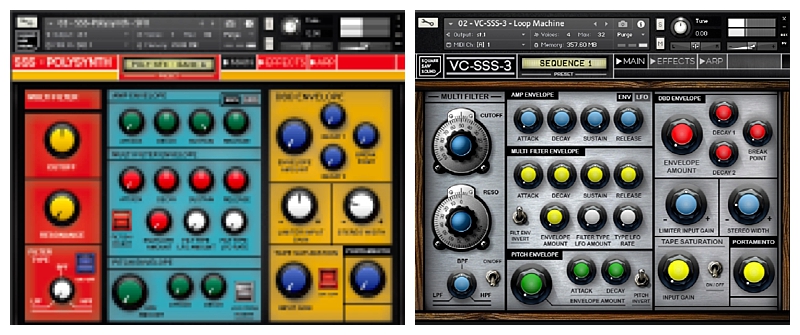XILS-lab
XILS-lab announces the availability of PolyKB III v3.5
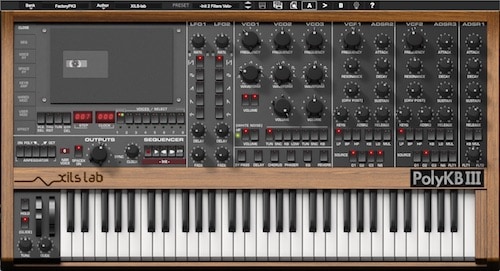
XILS-lab releases version 3.5 of the PolyKB III, which emulates the French legendary polyphonic analog synthesizer Polykobol II, and brings it to a new level of expressivity and musicality. This update is free for all PKB III users. If you wonder about the Kobol was used by Vince Clarke, Vangelis, Jean-Michel Jarre, Depeche Mode, Peter Gabriel, and Hans Zimmer.
PolyKB III v3.5 is an authentic-sounding simulation of the ultra-rare RSF Polykobol II ‘white whale’, albeit one on software steroids and now lifted to heightened levels of expressivity and musicality, thanks to several significant improvements over previous versions.
PolyKB III matchless modus operandi is its most revolutionary feature: free from aliasing, continuously-morphing oscillators. PolyKB III wants to be apart from the many ‘run-of-the-mill’ analog synth software re-creations readily out there since pushy PolyKB III programmers have instant access to hundreds of different analog-modeled waveforms — from triangle to pulse, through to sawtooth — via VCO1, VCO2, and VCO3, its flexible, free-running oscillators. On top of that, those oscillators can also be controlled by all modulation sources, so — unlike three-oscillator vintage analog hardware synths, such as the trailblazing Minimoog.
The end user experience of PolyKB III has also been updated, courtesy of the revamped GUI (Graphical User Interface) with reduced shadowing around the knobs to improve legibility of function wording, as well as redesigned tab selection and associated content. Not content with improving looks alone, a natural-sounding reverb now compliments already existing effects, ensuring PolyKB III always sounds as good as it looks!
PolyKB III Features
- 3 Morphing oscillators
- 2 Creamy Multimode 0df Filters
- 3 Envelopes, 2 LFOS
- Polysequencer, arpeggiator, vintage effects
- Analog presence and feeling
- Hundreds of modulation, including 2 Unique Per voice modulators, a supersized step sequencer, and two Mod Matrixes
XILS-lab
Xils Lab PolyKB III Sale

Xils Lab PolyKB III Sale
The Synthesizer They Should Have Invented 40 Years Ago
Simply the Most Versatile and Powerful Analog Modelled Polyphonic Synthesiser ever Produced…
The PolyKB III captures the sound and spirit of the legendary RSF PolyKobol 2 polyphonic synthesizer, including its most revolutionnary feature : Morphing analog Oscillators.
This set it apart from all the other common analog synth recreations, because you have instant access to hundreds of different analog modelled & free running oscillators waveforms. More than in other synthesizer, including those who propose switching between oscillators models. Icing on the cake, they can be dynamically modulated by many sources.
Let’s add: Two gorgeous, creamy multimode filters, self resonating in all modes, and Xils exclusive 0df technology. Three Analog modeled envelopes, with time multiplication, and looping capabilities. Two complex LFOs. They complete the picture to offer you this fat, warm, and immediately inspiring analog sound.

The PolyKB III captures the sound and spirit of the legendary RSF PolyKobol 2 polyphonic synthesizer, including its most revolutionary feature: Morphing analog Oscillators. Save 40% off (Affiliate Link) for a limited time only.
XILS-lab
XILS-lab Launches XILS 201 Vocoder and Vintage Synth
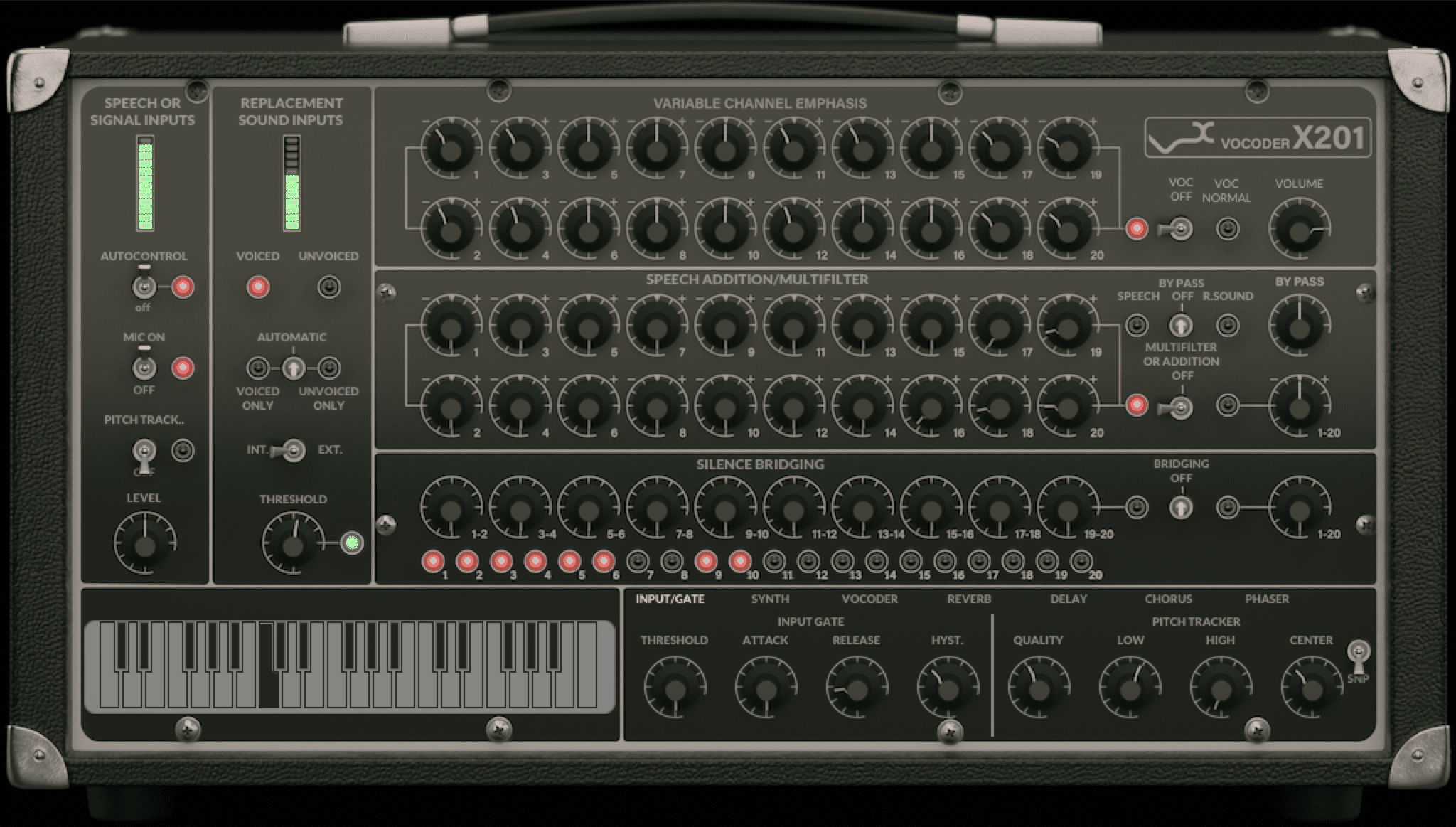
XILS-lab Releases XILS 201 Vocoder and Vintage
XILS-lab released XILS 201 inspired by a certain headphone- and microphone-manufacturing German giant’s sensational Seventies-vintage VSM 201 Vocoder. Modelling an ultra-rare (and ultra-pricey) sound effect device designed to take the human voice into the electronic sound world, widely appropriated by German techno-pop trailblazers Kraftwerk (throughout The Man Machine album in 1978, including its classic cut ‘The Robots’) and also (some say) voicing the Cylon robot race in that same year’s Battlestar Galactica TV series amongst other notable users and uses of the time. Also including influential American jazz keyboardist Herbie Hancock, before being given a new lease of life by French electronic music duo Daft Punk (on 2013’s chart-topping Random Access Memories long-player, playfully rebooting late-Seventies and early-Eighties American music), and now realistically rebooted itself in software (at a much more realistic price) by its fellow French creators.
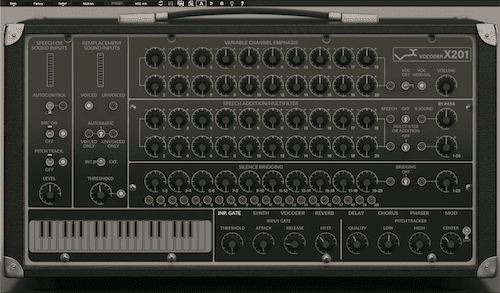
An appreciation of its iconic inspiration is virtually vital to truly appreciating the excellence of XILS 201, XILS-lab’s vocoder and vintage multi-effect plug-in par excellence, so stepping, briefly, back in time is inevitably of historical help. Let lessons begin: Vocoder — a portmanteau of voice and encoder — is a category of voice codec that analyses and synthesizes the human voice signal, invented in 1938 as a means of synthesizing human speech by Bell Labs’ Homer Dudley, whose work was developed into the channel vocoder for telecommunication transmission purposes, permitting speech transmission with very low bandwidth that results in somewhat distorted yet intelligible speech. Subsequently applied to musical signals, the results sound more or less like robotic speech or singing — think Teutonic techno-pop trailblazers Kraftwerk’s 1978 classic cut ‘The Robots’ (from The Man Machine album) and ‘Autobahn’ (a surprise international hit as a radio edit of the title track from the 1974 album).
And following the burgeoning breakthrough of electronic instruments, a certain headphone- and microphone-manufacturing German giant sought to take the human voice into that wonderful world of electronic sound with its VSM 201 Vocoder in 1978. Bolstered by several SPEECH AND SIGNAL INPUTS and REPLACEMENT SOUND INPUTS intelligibly indicated on its 470 x 260 mm front panel, this hopeful machine made musical sense in vocoder terminology, taking a carrier sound — synth waveform or any other sound containing sufficient harmonics — and articulating that sound with the human voice, much in the same way as a mouth articulates the sound coming from vocal cords, by detecting frequencies in the voice section and opening the corresponding frequencies in the carrier section.
Since the VSM 201 Vocoder featured 20 frequency bands spanning a 100 Hz to 8000 Hz spectral range — remembering the more bands used, the better the resulting effect — it sounded sensational. Indeed, its creator succeeded in taking one of the original 12 units to Kraftwerk’s Kling-Klang studio in Düsseldorf — despite commanding a five-figure price tag — in time to make an appearance throughout The Man Machine album, but barely made it into double-digit sales figure territory thereafter. The sensational-sounding VSM 201 Vocoder was destined to remain ultra-rare and ultra-pricey, as evidenced when Kraftwerk’s musically-modified example — custom-controllable by an external Telefunken 16-band MIDI-to-CV/gate unit for live performance purposes — showed up on an UK online auction site with a starting price of £8,214.00 GPB (plus 21% VAT for European Community-residing bidders) almost 40 years later! Little wonder, then, that XILS-lab set its inventive software sights on accomplishing an exacting emulation since the Seventies-vintage VSM 201 Vocoder still sounds sensational today, thanks to its unsurpassed intelligibility, while the few surviving examples clearly command sky-high prices.
Put it this way: with the much more realistically priced XILS 201 vocoder and vintage multi-effect plug-in, anyone can effectively buy in to the ‘missing link’ between the likes of Kraftwerk and its vocoder-voiced Cylon contemporaries in the original Battlestar Galactica TV series and, appropriately, French electronic music duo Daft Punk. Putting XILS 201 into its rightful context in its user manual, XILS-lab extols its virtual virtues as follows: “XILS 201 is a virtual effect based on the architecture of one of the coolest vintage vocoders out there. One of the best vocoders ever created, XILS 201 can take you back in time to when sound was so important for the great artists who started the electronic music revolution, such as Kraftwerk, Herbie Hancock, and others.”
On the face of it, XILS 201 looks the part, paying homage to the sensational Seventies-vintage VSM 201 Vocoder’s distinctive appearance — all the way through to replicating its tolex-covered casing and convenient carry handle, albeit only onscreen courtesy of a photo-realistic GUI (Graphical User Interface)! It also accomplishes XILS-lab’s stated goal of being true to the original in sound and adding features that were just not previously possible. Fanciful features worth highlighting include its two (VARIABLE CHANNEL EMPHASIS and SPEECH ADDITION/MULTIFILTER) filter banks, each offering 20 frequency bands and capable of processing the incoming signal — voice or any other signal, such as drums — or carrier signal; the inbuilt (modelled) analogue SYNTH can be used as a carrier, immediately imparting XILS 201 with its characteristic (and readily recognisable) sound — as can any other incoming signal, such as an external synthesizer or another voice; the exotic-sounding SILENCE BRIDGING section hosts a multi-band frequency-dependent envelope follower engine that shapes the signal gain according to its harmonic content — very useful for processing percussive or rhythmic sonic material, or adding a contour to the sound. Saying that, ‘internal circuitry’ parameters that were not available on the original hardware unit have been effectively exposed, making it more versatile and powerful, with several vintage analogue-modelled effects — CHORUS, DELAY, and PHASER — and an early ‘digital’ REVERB also added with custom-configurable routing and order options.
One relatively straightforward scenario when working with a DAW (Digital Audio Workstation) would be to record a voice — not necessarily singing, then choose the XILS 201’s inbuilt SYNTH as the carrier and send MIDI (Musical Instrument Digital Interface) notes to that carrier to make the voice ‘sing’ those notes — or chords (since the synth engine itself is polyphonic)… et voilà! It is also perfectly possible to use XILS 201 more simply — as a filter bank/chorus/delay/phaser/reverb multi-effect plug- in. Try it on a Rhodes, Clavinet, or string machine patch to rediscover those once-coveted organic sounds that required a long chain of vintage effects.
Sensational-sounding in its own right, XILS 201 is inherently musical — without necessarily needing to sound like a robot, though that, of course, can sound equally enticing, as ably demonstrated by Kraftwerk over 40 years ago during the burgeoning breakthrough of electronic instruments… back when men were machines!
Pricing and Availability
XILS 201 is available to purchase as a USB eLicenser or iLok (1, 2, and 3 dongle hardware or software) protected plug-in at an introductory promo price of €89.00 EUR until July 31, 2020 — rising thereafter to an MSRP (Manufacturer’s Suggested Retail Price) of €149.00 EUR#
XILS 201 is also available as part of the Analog Vocoders bundle together with XILS 5000 (as exacting emulations of two of the finest vocoders ever created, available as a single license) at an introductory promo price of €119.00 EUR until July 31, 2020 — rising thereafter to an MSRP of €199.00 EUR — from XILS-lab.
Note that owners of XILS 5000 can upgrade to the Analog String Machines bundle at an introductory promo price of €39.00 EUR until July 31, 2020 — rising thereafter to an MSRP of €59.00 EUR.
Bass
XILS-lab Pushes Paraphonic String Machine’s Sought-after Seventies-vintage Sound
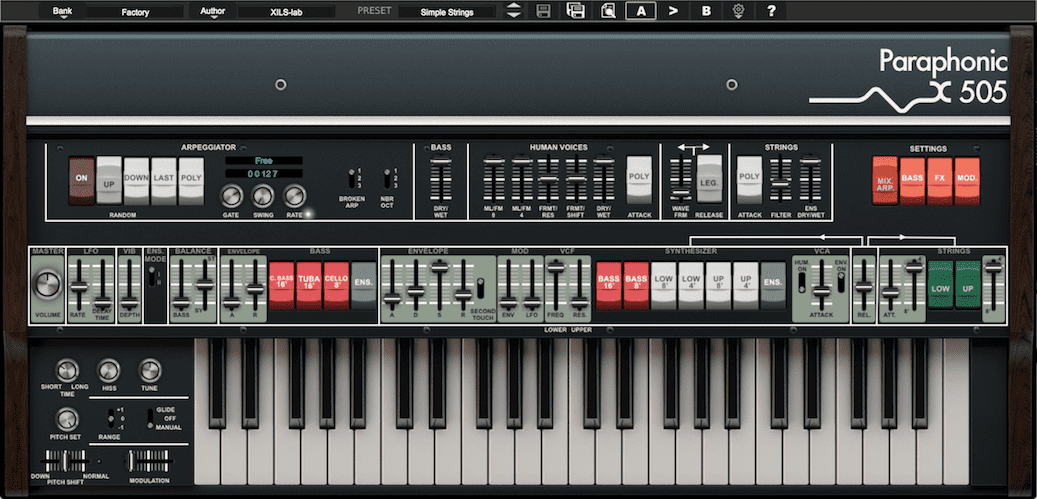
XILS-lab pushes paraphonic string machine’s sought-after Seventies-vintage sound into inspired ‘numeric namesake’ virtual instrument
XILS-lab newest XILS 505 is a ‘numeric namesake’ virtual instrument inspired by the (analog) architecture of one of the finest paraphonic string machines of its (Seventies-vintage) era, emerging from an acclaimed Japanese electronic musical instrument manufacturing company’s confident claim of “…a new synthesizer sound with chords, based on the strings sound with the aid of synthesizer technology…” at the time, and now radically reimagined above and beyond the still-sought-after sounds of the original’s so-called ‘Analog Orchestra’ of STRINGS, SYNTHESIZER, and BASS sections to include an added HUMAN VOICES section (as an alternative oscillator source for its authentic-sounding SYNTHESIZER section) and more.

Absolutely appreciating the still-sought-after sound of one of the finest paraphonic string machines of its era — emulated so beautifully by XILS 505, XILS-labs’ latest virtual instrument — involves stepping back, briefly, in time… to the late-Seventies, when most major synthesizer manufacturers moved into producing polyphonic instruments, incorporating divide-down technology used to already achieve that improvement in electronic organs of the time. Typically, a high- frequency clock drives a TOG (Top Octave Generator) oscillator chip — commonly known as a TOD (Top Octave Divider) — creating all the note frequencies for the top octave as basic square waves, which can then be fed to flip-flop dividers to produce an octave lower note. Needless to say, the output of that flip- flop can then be fed to another to get an octave below that, and so on.
On the face of it, this basically brought about an electronic instrument sub-genre: string machine — musically appropriate, somewhat, since it characterized the stylized synth sound that they tellingly make! Many of these instruments — including Moog’s megabucks-priced pioneering Polymoog keyboard (manufactured with widely criticized complexity and resultant reliability issues in the United States between 1978 and 1980) — are fully polyphonic… pressing down all keys results in all notes being heard. However, some — such as the aforesaid ‘numeric namesake’ virtual instrument’s Seventies-vintage string machine inspiration, itself considered to be one of the Japanese manufacturers involved’s finest electronic musical instruments of its era — are paraphonic.
Put it this way: XILS 505 politely pays hommage to its inspirational paraphonic precursor in many more ways than sound alone, authentic-sounding as it irrefutably is. It prominently positions Paraphonic (wording) across its realistically-rendered GUI (Graphical User Interface) in the same way as the original hardware has that same word boldly blazoned across its front panel; it is, after all, a paraphonic instrument in that it can play multiple pitches at once using all of its 49-key, four-octave (split) keyboard, albeit with a single shared VCF (Voltage Controlled Filter) and volume ENVELOPE so collective chords swell and diminish as a single cohesive whole. With welcomed authenticity in mind, XILS 505 provides up to 49 voices of polyphony from an aliasing-free exact emulation of one TOD oscillator, offering all the layering, source mixing, and sound sculpting possibilities of its analog ancestor. As such, it includes all parameters present in the original hardware’s so-called ‘Analog Orchestra’ of STRINGS, SYNTHESIZER, and BASS sections, such as the pivotal balance between the STRINGS section’s 4’ and 8’ registers, readily making it one of the most versatile and powerful string machines manufactured to date.
Duly reaching above and beyond the inspirational (analog) architecture of one of the finest paraphonic string machines of its (Seventies-vintage) era effectively informs XILS-lab’s latest virtual instrument. Indeed, company CEO Xavier Oudin offers the following insight into its creation when writing the following, excerpted from the XILS 505 user manual: “We at XILS-lab do our best to create authentic recreations of the great synthesizers we emulate and then take it even further. What can be done with today’s computers allows us to take these emulations beyond what was feasible when these products were first created. Our goal is to be true to the original in sound and modulation routings and then add features that were just not possible before.”
XILS 505 is following fanciful features are truly a state-of-the-art sonic experience in their own right while remaining true to its inspirational paraphonic precursor: aliasing-free exact emulation of one TOD oscillator providing up to 49 voices of polyphony; STRINGS section with its own FILTER, WAVE FRM (waveform modulating) and ATTACK and RELEASE settings; SYNTHESIZER section with dedicated ADSR ENVELOPE settings, 24dB analog VCF emulation with ENV (envelope) and LFO (Low-Frequency Oscillator) MOD (modulation), various ‘Rocker-switched’ sound sources, and special SECOND TOUCH re-trigger feature; HUMAN VOICES section with custom FRMT (formant) and balance settings; BASS section with three cumulative waveforms which can all be filtered; one main LFO to control the VIB (vibrato) and another — freely assignable — in the advanced modulation panel (accessed by pressing the orange MOD. ‘rocker switch’ in the SETTINGS section); several envelope parameters for each section, including a global ADSR for the SYNTHESIZER section and another — freely assignable — (DADSR envelope) in the advanced modulation panel; a thick-sounding quadruple BBD (Bucket Brigade Delay) chorus/ENS. (ensemble), each section having its own send level; finely-tuned PHASER emulation, natural-sounding vintage REVERB, and true STEREO SPACE effects (accessed by pressing the orange FX ‘rocker switch’ in the SETTINGS section); advanced modulation matrix with six nodes addressing 14 sources and 24 destinations to provide access to numerous ‘secret hardware’ parameters; special GLIDE function; and an advanced polyphonic ARPEGGIATOR. As such, a lot of those parameters were not accessible in XILS 505’s analog ancestor. And last but by no means least, all XILS 505 parameters, of course, can be controlled via MIDI (Musical Instrument Digital Interface) CC (Control Change) messages in a host DAW (Digital Audio Workstation).
With all that in mind, musically-speaking, XILS 505 can creatively combine its fanciful features to result in a much larger sound palette than that which was already available to owners of its inspirational (and increasingly rare) paraphonic precursor, allowing anyone to play parts that cannot be reliably replicated with any other synthesizers — Seventies-vintage in origin or otherwise!
Availibility and Pricing
XILS 505 is available to purchase as a USB eLicenser or iLok (1 and 2 dongle hardware or software) protected plug-in at an introductory promo price of €89.00 EUR until February 29, 2020 — rising thereafter to an MSRP (Manufacturer’s Suggested Retail Price) of €149.00 EUR.
XILS 505 is also available as part of the Analog String Machines bundle together with XILS V+ (offering VOCODER, HUMAN VOICES, and STRINGS sections) at an introductory promo price of €119.00 EUR until February 29, 2020 — rising thereafter to an MSRP of €199.00 EUR.
Note that owners of XILS V+ can upgrade to the Analog String Machines bundle at an introductory promo price of €39.00 EUR until February 29, 2020 — rising thereafter to an MSRP of €59.00 EUR-
XILS 505 can be directly downloaded as a multi-format AAX, AU, and VST (Mac OS X 10.8 and later) and AAX and VST (Windows 7, 9, and 10) plug-in from here.
-
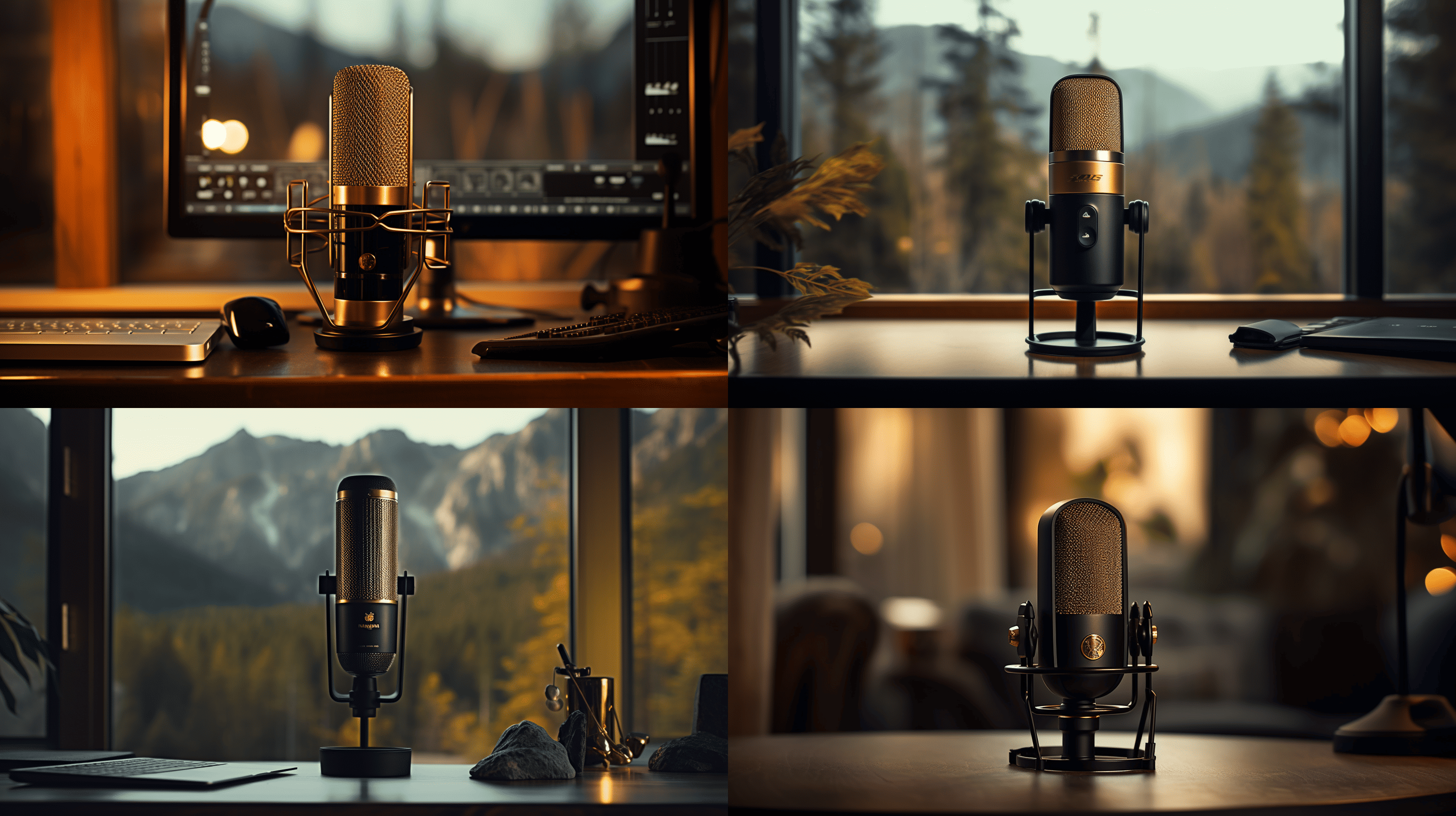
 Microphone2 hours ago
Microphone2 hours agoUnleash Your Inner Podcaster: Discover the Best Microphone for Crisp, Clear Audio
-

 Music Theory3 days ago
Music Theory3 days agoUnlocking Nature’s Harmony: The Power of 432 Hz Frequency in Sound & Music for Enhanced Living and Well-Being
-

 Sound Design7 days ago
Sound Design7 days agoWhat Is the Difference Between a Sound Engineer and A Sound Designer?
-

 Native Instruments Kontakt3 days ago
Native Instruments Kontakt3 days agoVOCAL AI – Animated Intelligence: The Ultimate Vocal Playground
-

 Sound Design7 days ago
Sound Design7 days agoWhy Sound Engineer
-
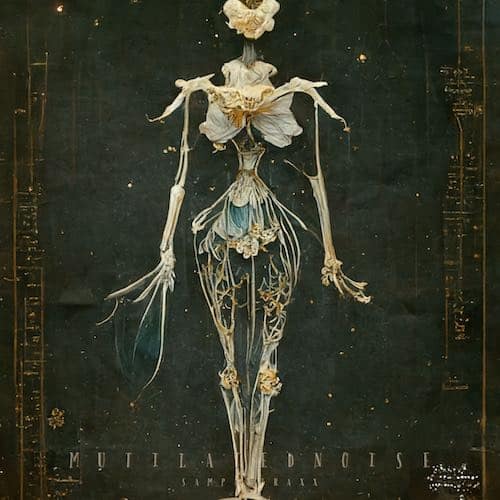
 Composing1 day ago
Composing1 day agoMUTILATED NOISE by SampleTraxx: The Next Generation Sound Collection
-

 Vetted3 months ago
Vetted3 months ago11 Best Gore Websites to Explore the Darker Side of the Internet
-

 Expert Guides3 months ago
Expert Guides3 months agoOptimize Your Space with Room Acoustic Treatment


